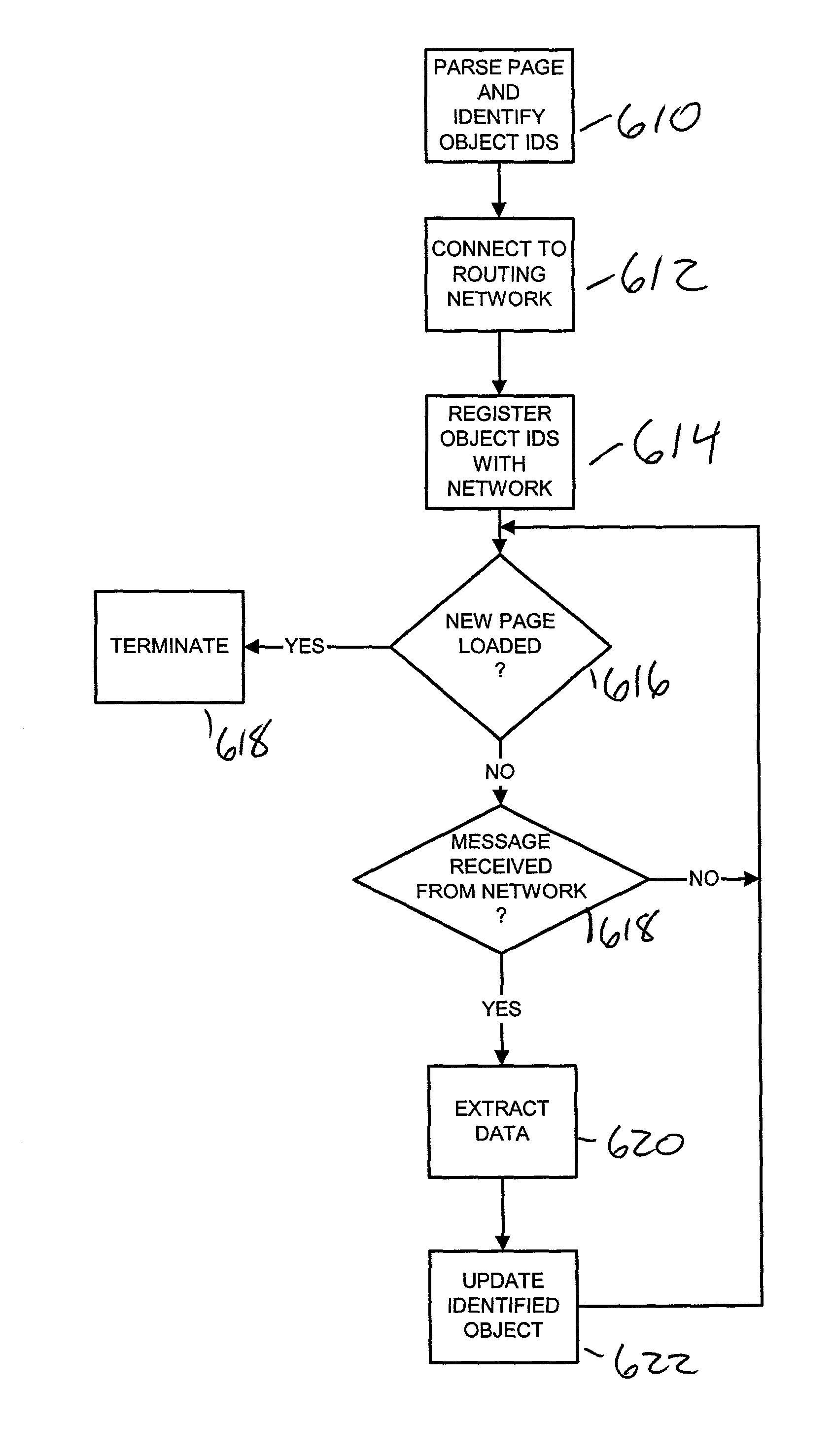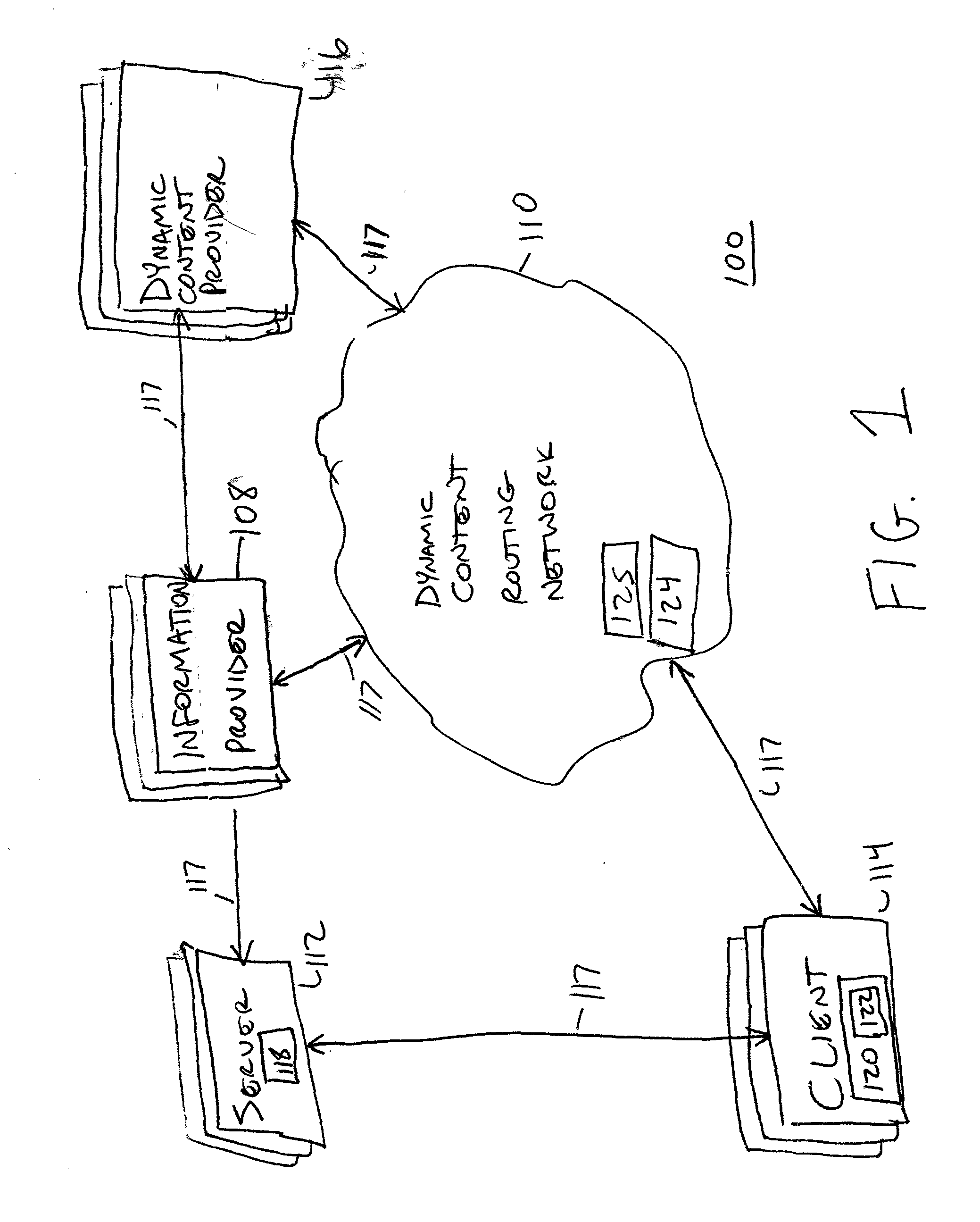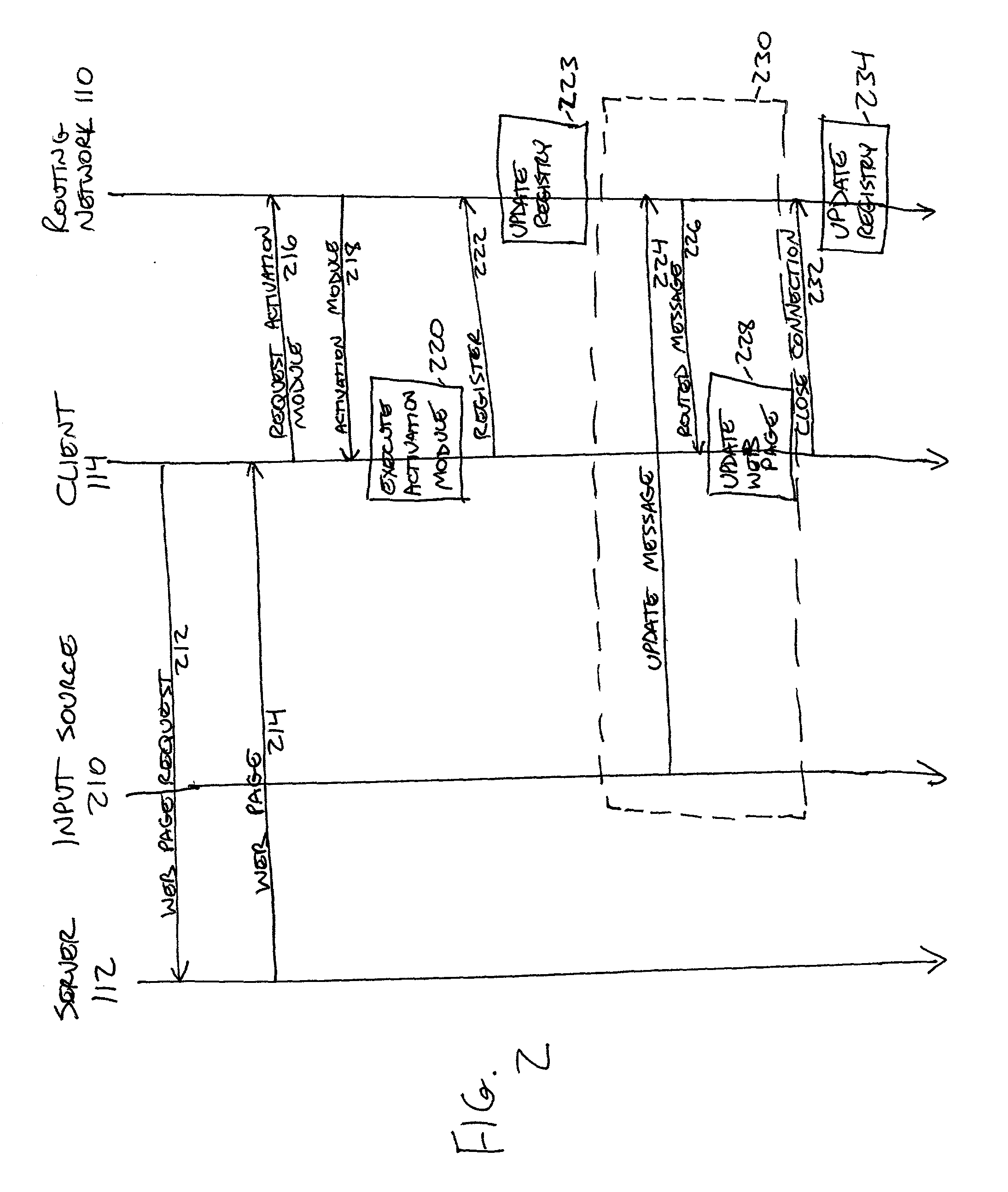Techniques for updating live objects at clients using a dynamic routing network
a dynamic routing network and live object technology, applied in the field of transferring information through, can solve the problems of not allowing efficient updating of data at the client device, web suffers from a substantial limitation in dynamically updating content in a web page, and the server has no way to inform the client device, so as to achieve the effect of efficiently utilizing bandwidth
- Summary
- Abstract
- Description
- Claims
- Application Information
AI Technical Summary
Benefits of technology
Problems solved by technology
Method used
Image
Examples
Embodiment Construction
[0029]FIG. 1 is a high-level block diagram illustrating an environment 100 containing a dynamic content routing network 110 (hereafter referred to as the “routing network”). The environment 100 also contains a server 112 in communication with a client 114, an information provider 108, and a dynamic content provider 116. Although a typical environment 100 will have hundreds of servers 112 and information providers 108, thousands (or even millions) of clients 114, and multiple dynamic content providers 116, FIG. 1 illustrates only one of each of these entities in order to enhance the clarity of this description.
[0030] The server 112, client 114, information provider 108, dynamic content provider 116, and routing network 110 are preferably in communication via conventional communications links 117 such as those comprising the Internet. The communications links 117 include known wired communications media, such as dedicated or shared data, cable television or telephone lines, and / or kn...
PUM
 Login to View More
Login to View More Abstract
Description
Claims
Application Information
 Login to View More
Login to View More - R&D
- Intellectual Property
- Life Sciences
- Materials
- Tech Scout
- Unparalleled Data Quality
- Higher Quality Content
- 60% Fewer Hallucinations
Browse by: Latest US Patents, China's latest patents, Technical Efficacy Thesaurus, Application Domain, Technology Topic, Popular Technical Reports.
© 2025 PatSnap. All rights reserved.Legal|Privacy policy|Modern Slavery Act Transparency Statement|Sitemap|About US| Contact US: help@patsnap.com



